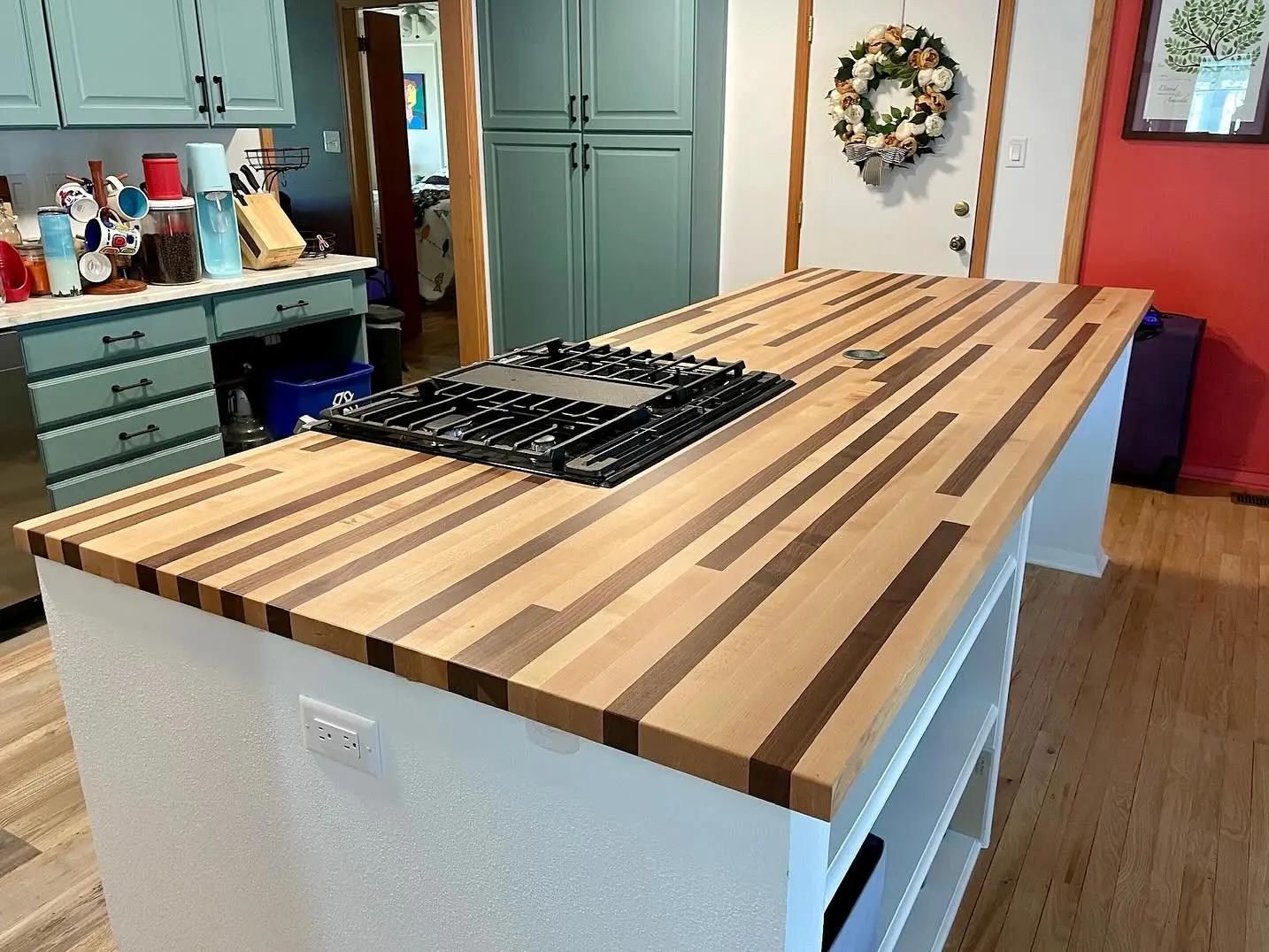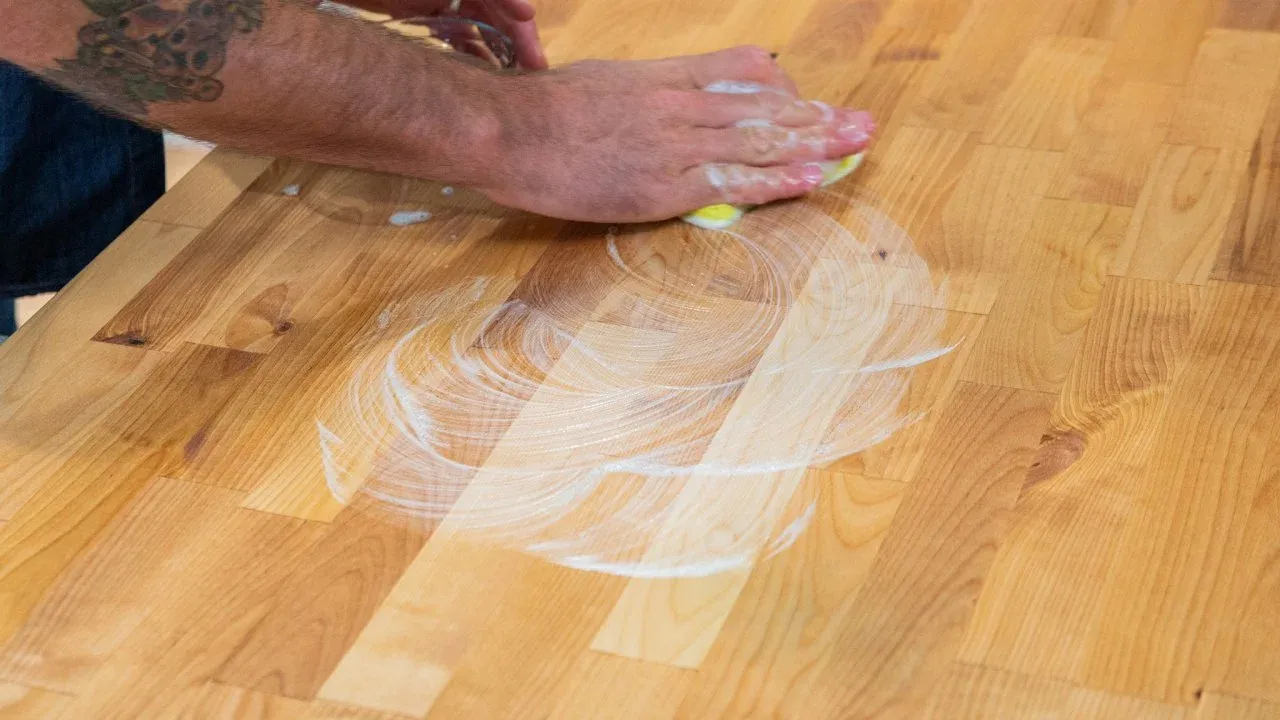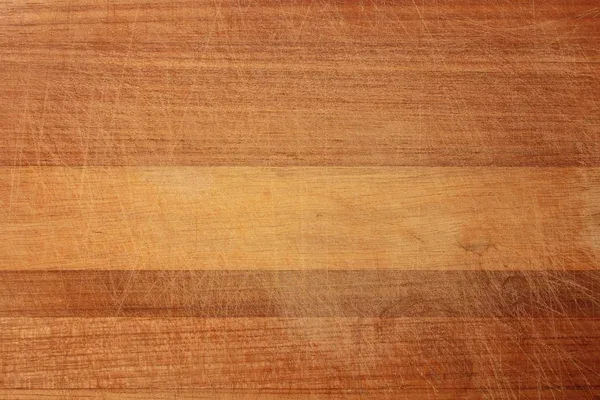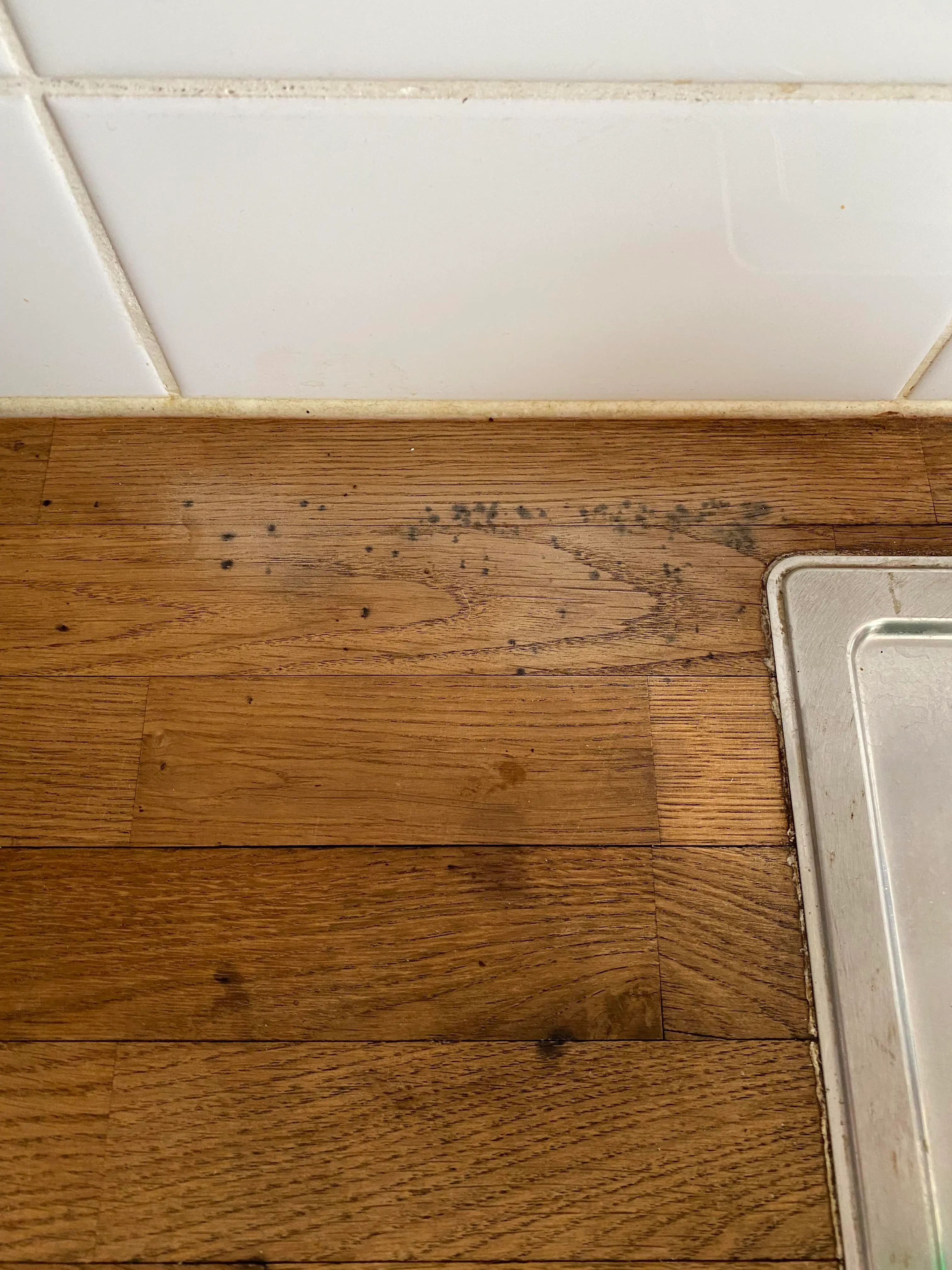Butcher Block Care: Keep Your Wood Surfaces Beautiful | Eden Oaks
POSTED ON December 04, 2024Butcher Block Care: Keep Your Wood Surfaces Beautiful | Eden Oaks

Why Butcher Block Care is Essential for Longevity
Butcher block surfaces are a popular choice for kitchens, tables, and islands due to their natural beauty, durability, and functionality. Made from hardwoods like maple, oak, and walnut, butcher block can withstand the wear and tear of daily use—whether you're preparing food, gathering with friends, or simply enjoying the warmth it brings to your space. However, like any wood product, butcher block requires care and maintenance to preserve its appeal and longevity.
Whether you use your butcher block every day for meal prep or as an occasional feature in your kitchen, it’s important to understand the basic steps of butcher block care. Proper care of your butcher block will ensure that it remains a stunning and functional centerpiece in your home or business for years to come.
In this guide, we’ll explore the best ways to clean, oil, and protect your butcher block. We’ll also address how climate impacts the wood and what you can do to care for it based on where you live—especially if you're in a dry climate like Colorado Springs. And, we’ll go over how to identify and handle common issues like mold and mildew that could affect your butcher block.
The Basics of Butcher Block Care: Cleaning, Oiling, and Protecting

Cleaning Your Butcher Block Proper Care
Regular cleaning is essential to maintain the health and look of your butcher block. Butcher block surfaces, especially those in the kitchen, need regular care to prevent food particles from affecting the wood's finish. If not properly cleaned, bacteria can accumulate and cause odors or even illness. Thankfully, the cleaning process for butcher block is simple.
- Use Mild Soap and Warm Water: For daily cleaning, use a gentle dish soap and warm water to wipe down the surface. Avoid using harsh chemicals, bleach, or abrasive sponges, as these can damage the wood’s finish or cause discoloration. For stubborn grime, a mixture of baking soda and water can be used to scrub the surface lightly without damaging the wood.
- Dry Immediately: After cleaning, use a dry cloth to wipe off any remaining moisture. This step is crucial for maintaining the integrity of the wood. Leaving water on the surface can lead to warping or swelling. Never let your butcher block air-dry; always dry it thoroughly to avoid damaging the wood.
- Disinfect As Needed: If you are concerned about bacteria, especially in food preparation areas, you can disinfect your butcher block using a solution of white vinegar and water. Mix equal parts vinegar and water and wipe down the surface. Vinegar is a natural disinfectant and won't harm the wood when used in moderation.
- Summary: Cleaning your butcher block requires mild soap, proper drying, and occasional disinfecting. Consistent cleaning will help maintain its beauty and ensure it remains bacteria-free.
Oiling and Conditioning Your Butcher Block
Wood, including butcher block, requires regular hydration to maintain its rich color and prevent cracking. Oiling your butcher block serves two main purposes: it keeps the wood nourished and prevents it from drying out, and it enhances the natural beauty and grain of the wood.

How to Apply Oil to Butcher Block:
- Choose the Right Oil: You should always use food-safe oil for your butcher block. There are a variety of oils on the market, but mineral oil, beeswax, and tung oil are the most commonly recommended. Mineral oil is an affordable, easy-to-use option that prevents moisture loss and protects the wood from food stains. Beeswax creates a durable finish that’s resistant to water and dirt. Tung oil is a more natural, eco-friendly option that provides a hard, water-resistant finish.
- How to Apply: Pour a generous amount of oil onto the surface of your butcher block. Using a clean, soft cloth, rub the oil into the wood in the direction of the grain. Allow the oil to soak into the wood for about 10–15 minutes. Wipe off any excess oil with a clean cloth to prevent a sticky residue. If the wood absorbs the oil quickly, you may want to apply a second coat for extra protection.
- Frequency: How often you need to oil your butcher block depends on its usage and the climate where you live. In general, for high-use surfaces like kitchen countertops, oil every 4–6 weeks. For low-use surfaces, like a kitchen table or shelves, oil every 2–3 months. If the butcher block looks dry or faded between oiling, it’s a sign that it needs another coat.
- Summary: Regularly oiling your butcher block every 4-6 weeks helps maintain its beauty and prevents cracks. Mineral oil, beeswax, and tung oil are great options for preserving butcher block surfaces.
Preventing Damage and Scratches on Butcher Block

While butcher block is a durable material, it’s not immune to damage. Over time, your butcher block will likely develop scratches, dents, and other imperfections. But don’t worry—these issues can be easily repaired with a little attention.
- Use Cutting Boards: To prevent direct knife marks on your butcher block, always use a separate cutting board when chopping or slicing food. This helps protect the surface from scratches and dents, keeping your butcher block looking its best.
- Protect From Hot Items: Butcher block can warp and discolor if exposed to high heat for extended periods. Avoid placing hot pots or pans directly on the surface. Use trivets or hot pads to protect the wood.
- Repairing Scratches: If you notice light scratches, you can sand them out using fine-grit sandpaper (220-grit). Sanding will smooth the surface, but be sure to reapply oil after sanding to restore the wood’s finish.
Mold and Mildew on Butcher Block: What to Look For and How to Address It
Butcher blocks are made from wood, and like all organic materials, they are susceptible to mold and mildew, especially when exposed to excessive moisture. Mold and mildew thrive in damp, warm environments, making it particularly important to monitor your butcher block in areas with high humidity or after spills.
What Mold and Mildew Look Like on Butcher Block:
- Mold is often dark green, black, or blue in color and may appear in patches on the surface of the wood. It thrives in areas with excess moisture and poor airflow.
- Mildew appears as white or grayish patches and tends to be powdery. It usually grows in damp environments or after water has been left standing on the butcher block for too long.

How to Prevent Mold and Mildew on Butcher Block:
- Wipe Up Spills Immediately: After any spill, especially liquids like water, wine, or oil, make sure to clean it up right away. Moisture is the primary culprit behind mold and mildew growth.
- Ensure Proper Ventilation: Keeping your kitchen or space well-ventilated is crucial for preventing mold and mildew. If your butcher block is near a window or in an area with limited airflow, consider adding a fan or opening windows to help with ventilation.
- Regular Cleaning: If you live in a humid environment, regularly clean your butcher block to avoid mold buildup. Use a vinegar-water solution to disinfect the surface, as vinegar helps to prevent mold growth.
- Summary: Prevent mold and mildew by keeping the butcher block dry, ensuring proper ventilation, and using vinegar-water solutions regularly.
What to Do If Mold or Mildew Appears:
- Cleaning Mold: If you spot mold on your butcher block, use a mixture of vinegar and water or a mild bleach solution (1 part bleach to 10 parts water). Gently scrub the affected area with a soft cloth or sponge, being sure to wipe away any residue. Afterward, thoroughly clean the surface with soapy water and dry it immediately.
- Sanding Away Mildew: If mildew has left behind stains, you may need to lightly sand the surface. Use fine-grit sandpaper (220-grit) to remove the mildew and restore the wood’s smooth finish. After sanding, reapply oil to restore the wood’s protective layer.
Caring for Butcher Block in Dry vs. Humid Climates
The climate where you live plays a significant role in the maintenance of your butcher block. In dry climates like Colorado Springs, wood tends to lose moisture quickly, which can cause it to crack and warp. On the other hand, in humid environments, excess moisture can cause the wood to swell or even develop mold and mildew. Here’s how to adjust your care routine based on your environment.

Caring for Butcher Block in Dry Climates Like Colorado Springs:
- More Frequent Oiling: In dry climates, your butcher block will dry out faster. To prevent this, you should oil your butcher block every 3-4 weeks. Use a heavier application of oil if the surface appears dry or rough.
- Humidity Control: If you live in an extremely dry climate, consider using a humidifier in your kitchen or dining area to maintain optimal humidity levels. This will help prevent your butcher block from becoming too dry and cracking.
- Protecting From Sun: The Colorado Springs sun can cause the wood to fade and dry out. To avoid sun damage, place your butcher block away from direct sunlight, or use curtains or blinds to filter light.
Caring for Butcher Block in Humid Climates:
- Less Frequent Oiling: In humid environments, you won’t need to oil your butcher block as often. Typically, every 6-8 weeks should be sufficient.
- Dehumidifying: In areas with high humidity, it’s important to use a dehumidifier in the room to maintain balance. Excess moisture can lead to warping and mold growth on the surface.
- Monitoring for Mold: Humid climates create a higher risk for mold and mildew. Regularly inspect your butcher block for signs of mold and clean the surface as soon as you notice any buildup.
- Summary: Adjust your butcher block care based on the climate. Dry climates require frequent oiling, while humid environments demand monitoring for mold and reducing moisture exposure.
Your Ultimate Butcher Block Care Guide
Butcher block is a long-lasting, beautiful addition to your home, but it requires regular care to keep it looking its best. Whether you live in a dry climate like Colorado Springs or a humid environment, understanding how your local climate affects the wood is crucial for maintaining the integrity of your butcher block.
By following these simple steps for cleaning, oiling, and protecting your butcher block, you can ensure it remains a stunning and functional centerpiece in your kitchen for years to come. Proper care—whether it’s more frequent oiling in dry climates or mold prevention in humid areas—will extend the life of your butcher block and preserve its natural beauty.
Thank you for reading our butcher block care guide!
If you have any more questions or need tips on choosing or maintaining your wood surfaces, feel free to reach out to us at Eden Oaks.
FAQ Section
How often should you oil a butcher block?
- Generally, oil high-use butcher block surfaces every 4-6 weeks. For low-use surfaces, oil every 2-3 months or as needed.
What oil is best for butcher block care?
- Food-safe options like mineral oil, beeswax, or tung oil are recommended for butcher block care.
Can I use vinegar on butcher block countertops?
- Yes, vinegar mixed with water is a great natural disinfectant for butcher blocks, especially for food preparation areas.
How do I restore a dry butcher block?
- Apply a generous coat of food-safe oil, let it soak for 10-15 minutes, then wipe off any excess. Repeat as necessary to restore the wood's moisture.
Products
Design
Eden Oaks Colorado Springs
Shop: 709 Nichols Blvd Unit A, Colorado Springs, CO 80907
Showroom: 122 E Kiowa St, Colorado Springs, CO 80903
© 2025 Eden Oaks Designer Woodware. All rights reserved.



